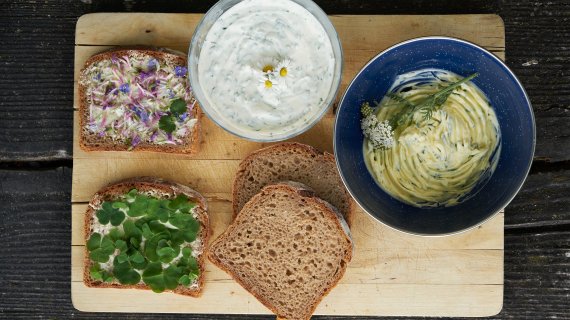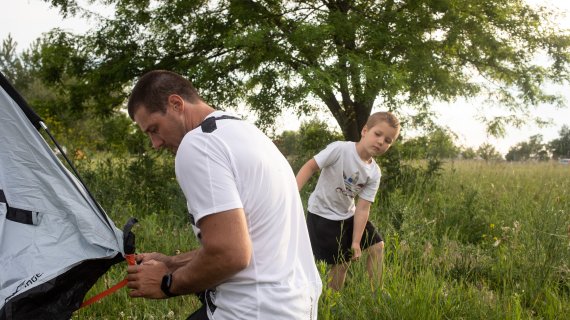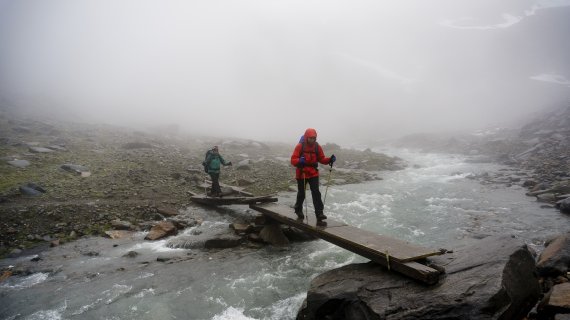Collecting wild plants is the big food trend of the hour. But does foraging also work on our doorstep? Our author usually appreciates sporting challenges while hiking - now he discovers the ingredients for his next snack on foot.
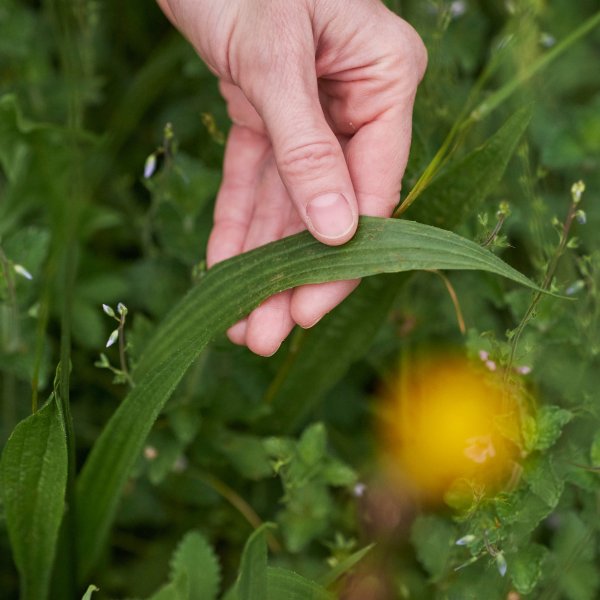
The natural spectacle begins in the middle of civilization. The large meadow below the Walchensee power plant is in full splendour. Every few centimetres, another colour shines, it proliferates, blooms and greenens. Only a few steps beside the path stands the orchid, an orchid native to Bavaria; quite rare and strictly protected. Sonja Greimel stands in the midst of this full life and radiates: "This meadow is so beautiful and so varied, you rarely see anything like it."
For the common snack after the hike, we look for young plants, which do not bloom yet. Because the fresh shoots have the most energy, the best taste: yarrow, wild strawberries, dandelion, wild thyme, beaver-nut and more. When she laughs, Sonja looks like she's in her mid-20s. But she has been in the sports and outdoor industry for so long that she helped shape the beginnings of snowboarding in Europe. For eight years she has been collecting herbs in her spare time, first on her own and for three years also for the German Alpine Association.
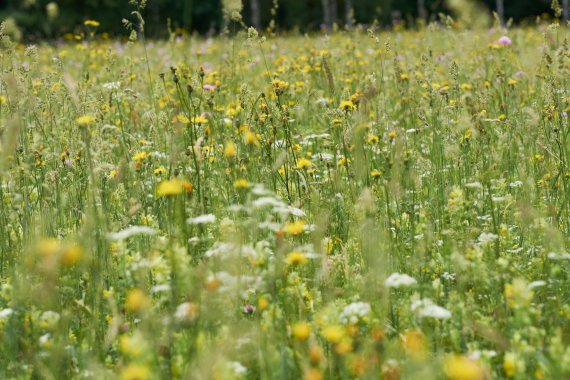
We have 12,000 different plants in Europe - almost every tenth of them is edible.
Our tour goes half around the Kochelsee. The path itself is not worth mentioning. From the old monastery, you go over side roads and through a settlement on the lake shore, into the forest and further on on a wide, almost comfortable path on the southern high shore of the lake. All in all just five kilometres, not exactly an adventure. But our destination today is not on distant peaks, but often enough only a stone's throw away from the path, sometimes in the middle of it.
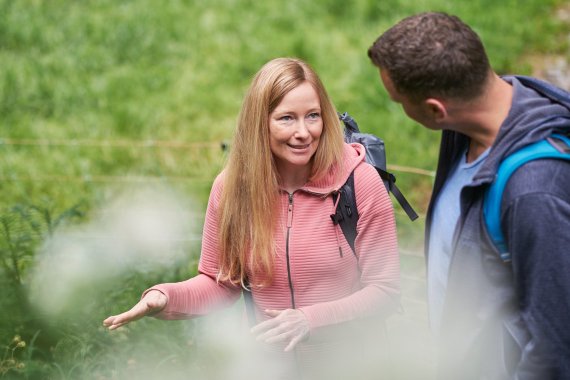
There are 12,000 different plants in Europe, around 1,500 of them are edible. And those who would like to discover at least a small part of it, participate in a herb hike. This is not about emulating survival freaks like Rüdiger Nehberg. "But if you know what you see along the way, you can also see how varied nature is," Sonja explains. And in the ideal case, the people then also pay better attention to them and learn to appreciate them. Many of the plants we encounter on everyday tours are almost as old as time. The horsetail next to the garden gate? 400 million years on Earth. The ferns in the shade? 350 million years here, too.
The enthusiasm for the beauties of nature runs through Sonja's veigns. "I grew up with it at my aunt's," she says, "and there was this knowledge about life - which plants are there, which ingredients do they have, how do you process them." At her aunt's, that means: a farm behind villages, in the middle of the Upper Bavarian countryside. "I could do what I wanted there, all day, roam around in nature. It was a dream," Sonja remembers.
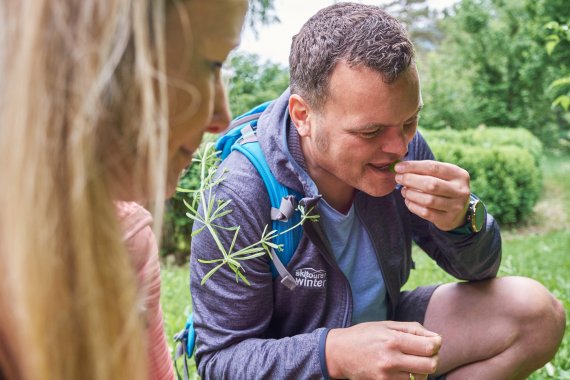
In the evening, the old stories and legends about the plants were told. About yarrow, also known as the "Eyebrow of Venus", which contains essential oils – like the real chamomile. Or about the elder bush, whose juice not only strengthens the immune system. It should also be the residence of the good goddess Holler. This is why elderberries are often planted close to farmhouses. Especially in the countryside, where they would drive away evil spirits.
Even if we haven't gotten very far yet: Meanwhile, the hunger makes itself noticeable. Sonja has discovered a place with deep red wild strawberries. The taste: intensely sweet and strong, quite different from the sometimes quite watery cultured specimens from the supermarket. Not a serious meal, but not to be underestimated. Wild strawberries are significantly more nutritious than normal strawberries, Sonja explains.
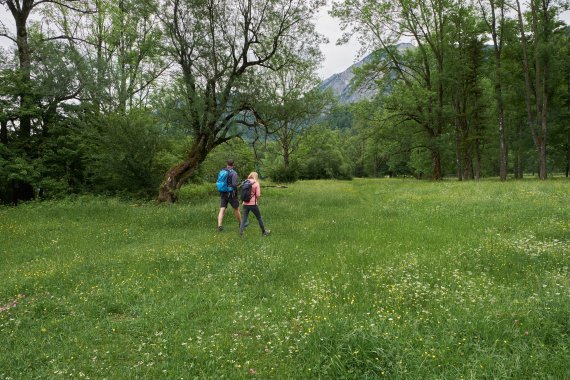
In general, the different tastes and enjoyment play an important role on herbal walks. In the past, Sonja says, she simply explained what there was to see and what could be done with it. Meanwhile she makes her companions taste, smell and feel again and again. And after the hike, we will eat together. "It just makes you notice more and remember better."
The plants out here still have plenty of their original ingredients.
But you should be careful, if you also want to venture into nature with culinary delights. "You must approach," Sonja explains. "We are used to salad and vegetables from the supermarket, there is often not much left in it. The plants out here still have plenty of their original ingredients." Whoever eats too much at the beginning risks an overdose of nature and in the worst case reacts with allergies. "But you also notice that you are full much faster, if you cook with the ingredients from nature. There is simply more to it," Sonja explains.
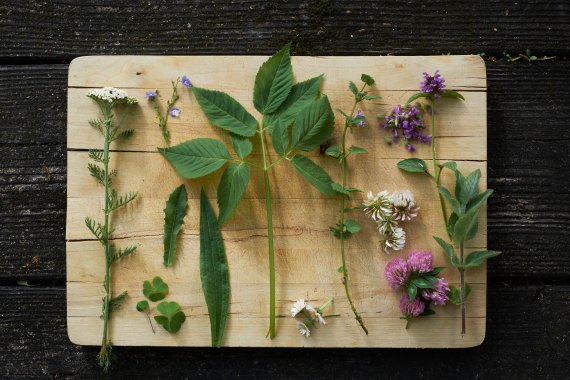
And of course, the wrong ingredients can also be added from outside: On the farmer's meadows, you never know when and how fertilizers were last used, at the roadside it is possible that you are searching in a dog toilet. Risks that can usually be excluded when hiking in the foothills of the Alps. Definitely on our route.
A trick of the collector: Where others swear by baskets or paper bags, she uses freezer bags with zippers - and a breeze of fresh breath.
Being on the road with Sonja can be a tedious business, but it's boring. With almost every step, she discovers new berries, flowers, herbs, roots or buds. Until now, the short hike took almost three hours, and we only have two thirds of the way to the ferry terminal in Altjoch behind us. But the collection bags are stuffed with the most different flowers and leaves. A trick of the collector: Where others swear by baskets or paper bags, she uses freezer bags with zippers. She fills it with her prey, inflates it and closes it. So the herbs remain protected from pressure in the backpack like in a balloon and are kept moist by the breath.
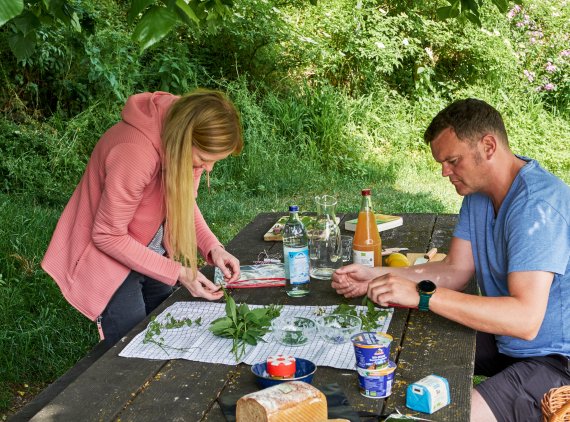
Meanwhile, we harvest wood sorrel on a steep slope in the forest. We put the tender leaves directly on the spot on our sandwiches from the backpack and enjoy. We discover valerian and carnation root. And there is again the goutweed, "weed and hate object of all gardeners". But when you rub the young leaves, it smells like carrots, parsnips, root vegetables – the taste is reminiscent of parsley and young spinach.
After about four hours, which felt just like a single one, we reach the mooring from where the ferry will take us back across the lake. It is amazing how many different plants, smells and tastes we discovered on this short way and how time flew by.
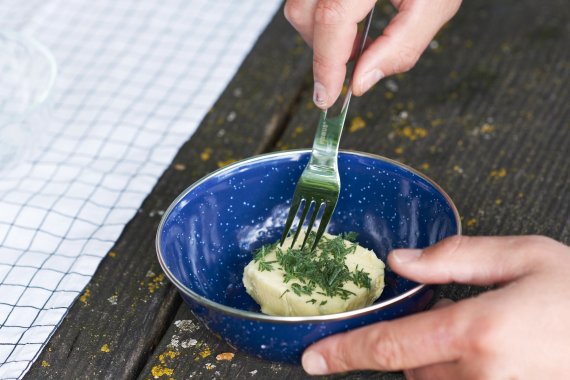
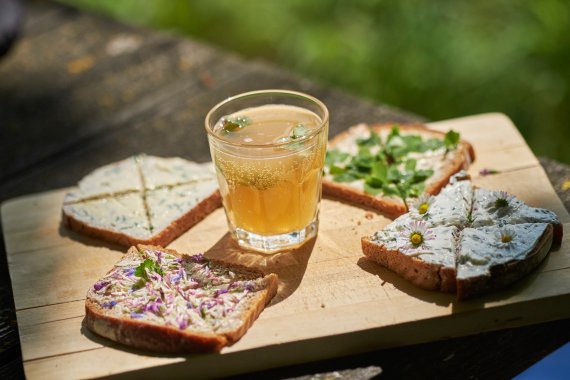
While we wait, Sonja clears up a prejudice. "Dandelion's great," she says. The young shoots can be used like arugula, the flowers can be eaten pure or roasted like mushrooms. But didn't we learn that dandelions are poisonous, when we were young? Sonja laughs: This is a fairy tale from the time before the invention of the washing machine. The juice from the flower stems simply makes terrible stains that you can hardly get out of your clothes anymore. Hence the warning of the mothers - and the bad reputation of the dandelion. Learned something again.
